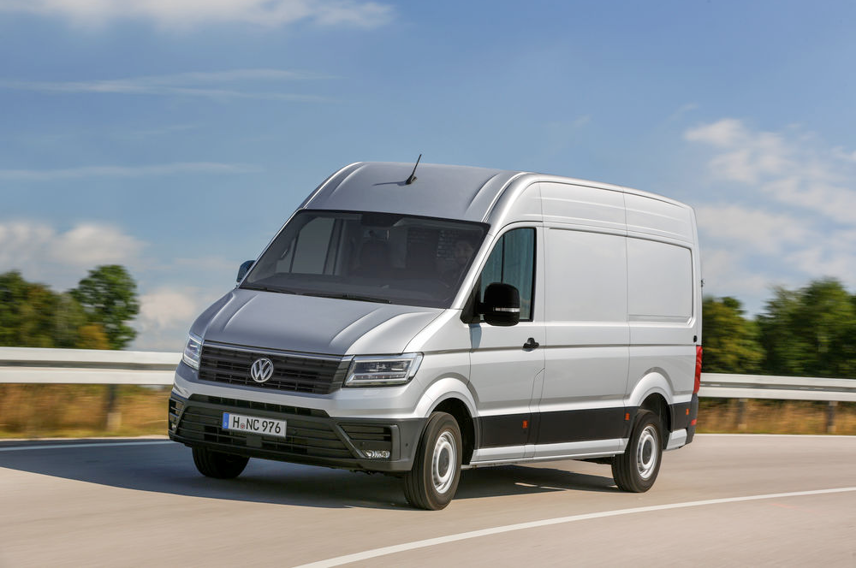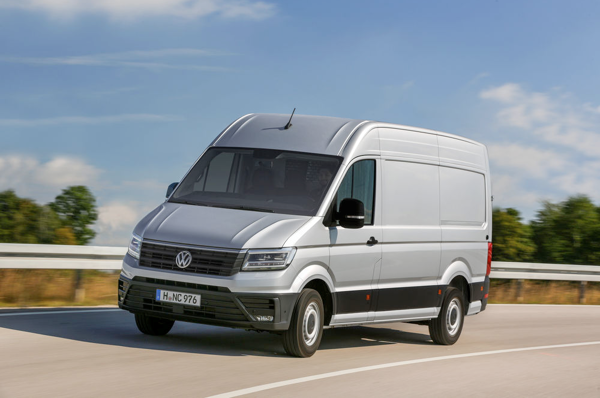Review
There are minor facelifts, mid-life revamps, upgrades and fresh models – but we rarely get the chance to test a van which is totally new from the ground up. Such a vehicle is the new Volkswagen Crafter, which goes on sale in April and hails from the manufacturer’s new plant at Wrzesnia in Poland.
Until now the Crafter had been built by Mercedes-Benz at its Düsseldorf factory in Germany and was a clone of the Sprinter, albeit with a different front end and engines. But that arrangement has been axed – for reasons not made public – and this new van is a VW through and through.
There are no prizes for guessing where the designers got their inspiration – the new Crafter looks like a Transporter on steroids. And, given the smaller model is generally recognised as being one of the best vans in the world, giving the two vehicles a familiar face would appear to be a wise move.
The new Crafter is hugely important for Volkswagen, as the old model was the Achilles heel of the range. While the Caddy and Transporter sell well, the Crafter has always lagged behind its Sprinter twin.
So sitting at No 2 in the sales charts behind Ford, Volkswagen believes with a fresh heavy van on sale, it could finally start to challenge the blue oval’s dominance in the sector.
Volkswagen has been drip-feeding the press with symposiums, static launches and factory visits for some months now, but we finally got the chance to get behind the wheel of this new offering in Almeria, southern Spain.
The Crafter is being offered in a wide array of formats and comes complete with a host of hi-tech gadgetry which would have been unthinkable even five years ago.
When the full range is rolled out, there will be panel vans, single- and double-cabs, dropsides and tippers, and gross vehicle weights will go from 3.5 tonnes to 5.5 tonnes. There will be three lengths and three roof heights and drivetrains will be front-wheel drive, rear-wheel drive and 4Motion.
Under the bonnet is an uprated version of Volkswagen’s current Euro 6 2.0-litre turbodiesel powerplant which will offer on average 15% better fuel economy than its present Euro 6 version. Three power grades will be available – 102PS, 140PS and a bi-turbo 177PS – and all are mated to six-speed gearboxes and feature stop-start as standard.
The engine is mounted transversely and has been tilted at an angle of 8% to allow a little more room for cab occupants.
On the safety front, in addition to the now mandatory ESP and ABS systems, Volkswagen will be offering lane assist, park assist (parks the vehicle automatically), trailer assist (helps when reversing with a trailer), adaptive cruise control which applies the brakes automatically if a shunt is imminent, automatic post-collision braking and light assist and side wind assist. All new Crafters will feature four airbags.
Meanwhile the steering system has been redesigned and is now best in class with a electro-mechanical set-up which, Volkswagen claims, makes it the safest, easiest and most comfortable vehicle in its class to drive.
The Crafter also claims a class-leading drag co-efficiency factor of 0.33Cd, another reason for the better fuel economy.
Volkswagen plans an eCrafter which will be tested with some European fleet operators this year. The batteries are under the floor so load volume is not affected and this variant has a gross vehicle weight of 4.4 tonnes. However, VW bosses said there are no plans for a right-hand drive version.
First front-wheel drive versions will arrive in the UK in April, followed by rear-wheel drive vans towards the end of the year. Chassis-cab versions won’t be here until the end of 2017, followed finally by passenger and minibuses in 2018.
Kelly Brown, Volkswagen Crafter product manager, said her staff had already met with major fleet buyers and dealers to discuss which equipment should be standard and which could be put on the options list.
She told Commercial Fleet: “Our brief is to make sure we offer the best number of flexible options for fleet buyers and for them the most important thing was for us to offer a base vehicle at the lowest possible cost, so they could tailor the vans to meet their exact specifications.”
Side wind assist and post collision assist will be standard as they will come ready-fitted from the factory but most of the other hi-tech safety systems are likely to be extras.
Brown pointed to the benefits of Volkswagen making the Crafter itself: “We now have the flexibility to cover just about all fleet options whereas before we relied on our partner, who may not have been able to provide some of the more unusual requests. Now we have our own factory, we can now offer things we couldn’t provide before.”
The front-wheel drive models are expected to account for 70% of sales.
Production of the old Crafter stopped at the end of the year but Brown is confident there will not be a sales gap between this and the new vehicle, despite the fact that fleets won’t get their first deliveries until April. She said: “The run-out has been planned with great care so there is no gap. I am confident there won’t be a dip in sales.”
Although Brown declined to predict future sales of Crafters, she expects a major rise compared to the 8,000 shifted in 2015, thus helping to consolidate the German manufacturer at number two in the UK sales chart.
We were expecting big things from the Crafter and, having driven three different versions at the launch in Almeria, we weren’t disappointed.
The Crafter appears more in keeping with the Volks-wagen ‘family face’ and all three vans – Caddy, Transporter and Crafter – now look much more together than previously.
Our test vans all came swathed in plastic to protect them from minor bumps and scrapes and each had a half load on board, to give us a better idea of real-life conditions.
Climbing aboard, the doors feel heavy and well made and all shut with a satisfying and very upmarket thunk. The seats are like those in the Transporter – fairly firm, figure hugging and superbly supportive for long journeys.
There are some nice touches in the cab such as a large overhead storage space, coffee cup holders on top of the dash and both USB and 12-volt take-offs too, so sat-navs and other devices can be plugged in without having wires trailing all over the place.
The only real disappointment was the styling of the dashboard. It is very much a case of function over form. Having said that, all the knobs and switches are easy to reach so most fleet buyers won’t be bothered by such nitpicking.
First up was the lowest powered 95PS version in medium wheelbase format and despite its relatively diminutive output, it didn’t appear underpowered at all, apart from on the odd steep incline on one Andalusian mountain. It’s ideal for round-town work and medium journeys.
For our second test we ramped up to the 140PS, again in medium wheelbase format, and the power was sure and strong right up to motorway speeds.
The only version that is likely to need the top-rated bi-turbo 177PS engine is at 5.5 tonnes and with heavy loads to be shifted over long distances.
Our drive in this powerhouse (in the 3.5-tonne van) resulted in a sports-like performance with no shortage of oomph even on the steepest of hills. However, as mentioned, this power not necessary for the lighter van.
It seems incredible that such performance can emanate from a 2.0-litre turbodiesel engine, but technology has advanced to such a stage that virtually any amount of power can be ‘dialled in’ by simply remapping the engine management unit.
The built-in sat-nav unit is Volkswagen’s own and this proved a disappointment. My co-driver and myself soon came to rue its use after it led us wrong twice, once taking us right off road into a patch of scrub land where we had a problem getting out again.
It didn’t have a bird’s eye view option either. Give us a TomTom unit any day.
Our minor gripes apart, the Crafter is every bit the quality van to take on the host of superb rivals it faces, such as the Mercedes-Benz Sprinter and Ford Transit. We’ll be watching the sales charts with interest in the coming months.





 Diesel
Diesel












